How to Fix ERR_NAME_RESOLUTION_FAILED Error in Chrome
Get Free Scanner and check your computer for errors
Fix It NowTo fix found issues, you have to purchase the full version of Combo Cleaner. Free trial available. Combo Cleaner is owned and operated by Rcs Lt, the parent company of PCRisk.com read more.
How to Fix the ERR_NAME_RESOLUTION_FAILED Error in Google Chrome
When you open Google Chrome, you may be greeted with an error message saying, "This webpage is not available. Error code: ERR_NAME_RESOLUTION_FAILED [error code 137].” The good news is that you can fix this error using the 4 methods provided in this article.
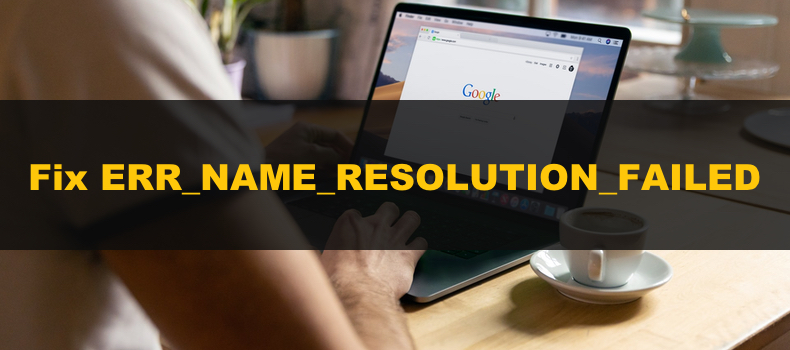
You may get the ERR_NAME_RESOLUTION_FAILED error only on some websites while being able to access all other websites without a hitch.
Typically, you'll see this error when your Internet connection is down, a website no longer exists, or was moved to a different domain name. Nevertheless, you may also experience the ERR_NAME_RESOLUTION_FAILED error due to corrupted DNS settings, corrupted web browser cache, and incorrect Internet configuration settings.
What Causes This Error
- Google Chrome settings. Some of your browser settings can trigger this error and prevent you from accessing the website. Clearing the Google Chrome browsing cache or resetting the browser to default settings may fix the issue.
- Winsock settings. Winsock settings tell the system how to interact with other network services. Misconfigured settings may trigger this error. Performing a Winsock reset can fix it.
- DNS server settings. The website you're trying to access may be blocked by your ISP's (Internet Service Provider) DNS configuration. Changing the DNS server address may fix the error.
Video Guide on How to Fix ERR_NAME_RESOLUTION_FAILED
Table of Contents:
- Introduction
- Solution 1. Clear Google Chrome Cache
- Solution 2. Reset Google Chrome
- Solution 3. Flush the DNS and Perform Winsock Reset
- Solution 4. Change Your DNS Server Address
- Video Guide on How to Fix ERR NAME RESOLUTION FAILED
Download Computer Malware Repair Tool
It is recommended to run a free scan with Combo Cleaner - a tool to detect viruses and malware on your device. You will need to purchase the full version to remove infections. Free trial available. Combo Cleaner is owned and operated by Rcs Lt, the parent company of PCRisk.com read more.
Solution 1. Clear the Google Chrome Cache
1. Open Google Chrome.
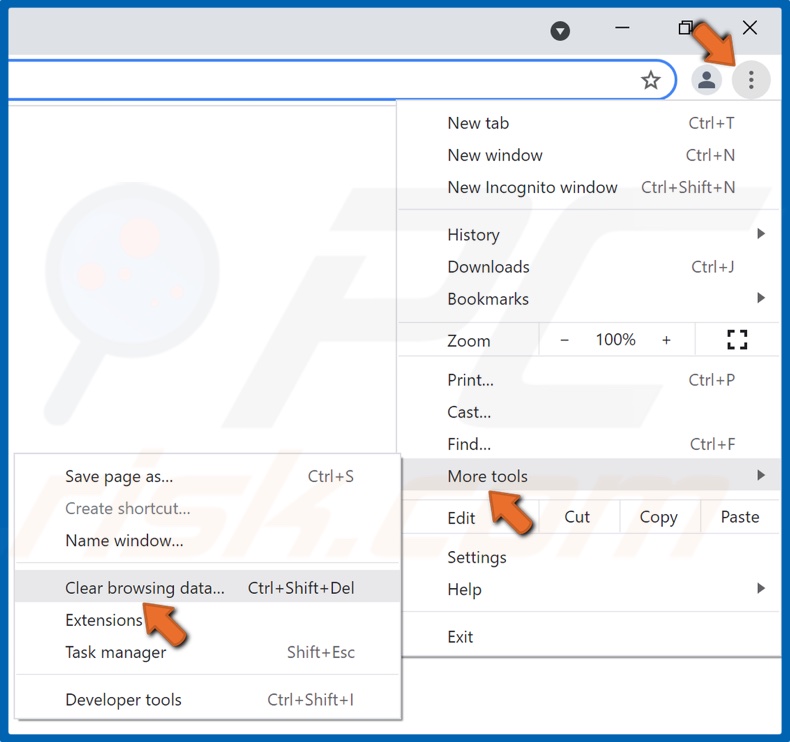
2. At the top-right corner, click More, select More tools, and click Clear browsing data.
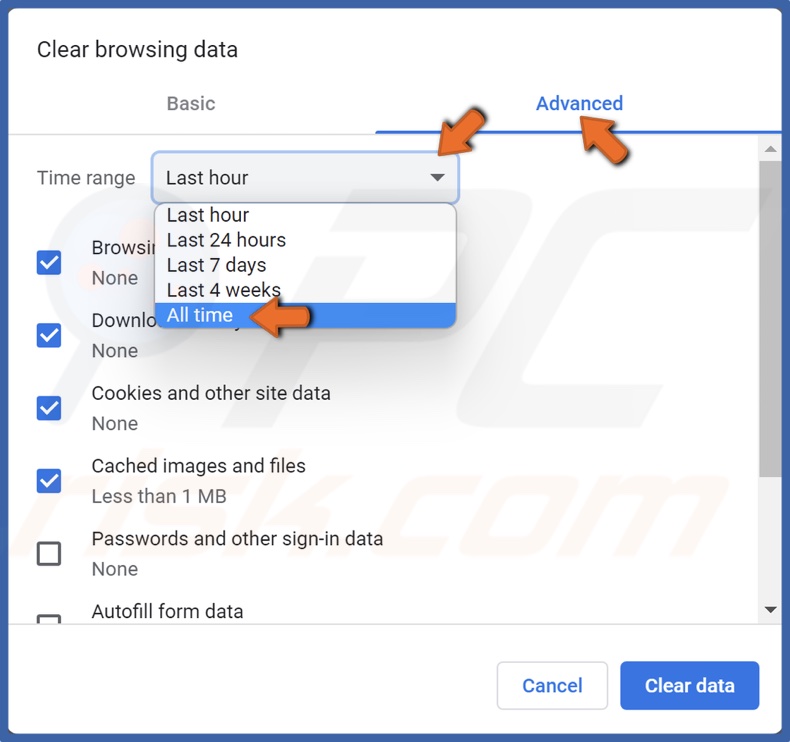
3. Select Advanced.
4. Then, open the Time range drop-down menu and select All time.
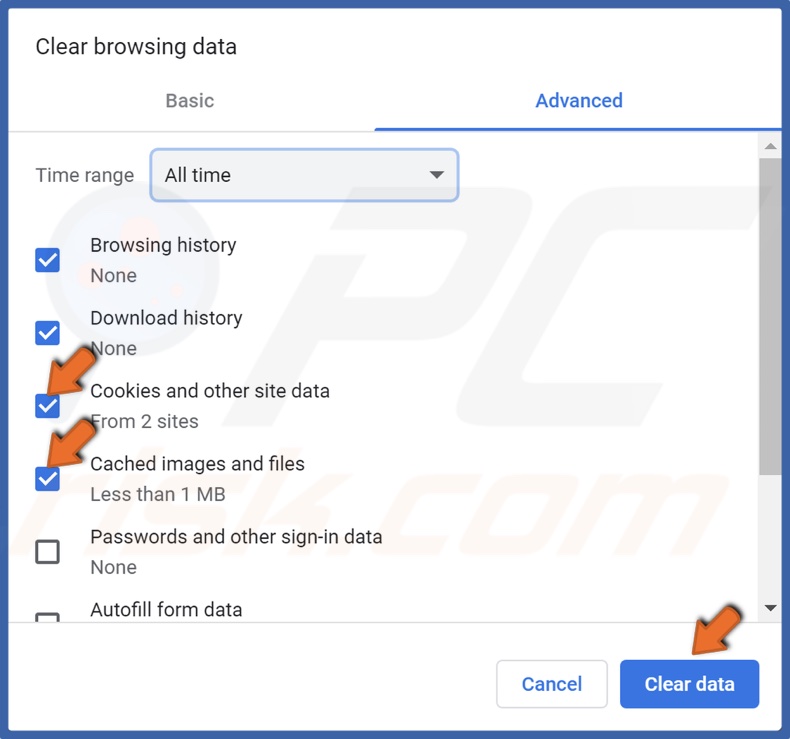
5. Then, tick the checkboxes next to Cookies and other site data, and Cached images and files. You might want to keep your Passwords and sign-in data, so we don't recommend selecting it.
6. Click Clear data.
Solution 2. Reset Google Chrome
1. Open Google Chrome.
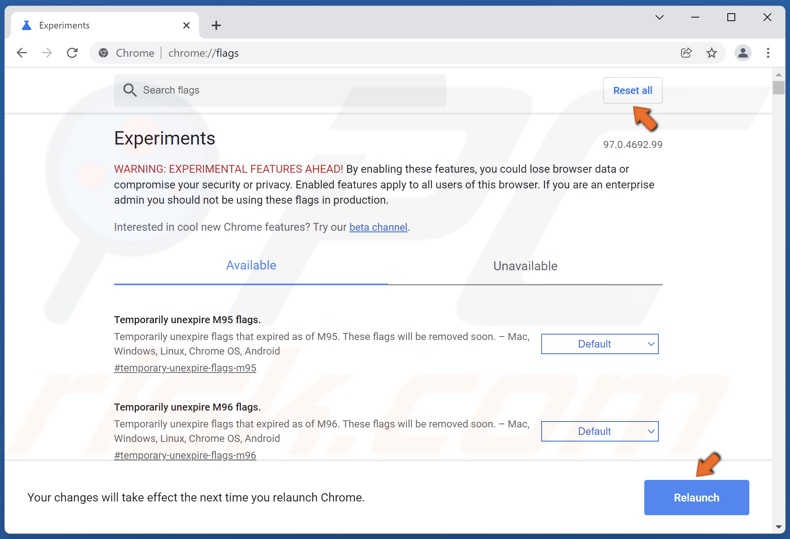
2. Type in chrome://flags/ in the Omnibox and press the Enter key.
3. Click Reset all.
4. Then, click Relaunch.
Solution 3. Flush the DNS and Perform Winsock Reset
Running the Netsh Winsocket Reset will reset the socket settings of the TCP/TP stack, which should fix the error.
1. Hold down Windows+R keys to open Run.
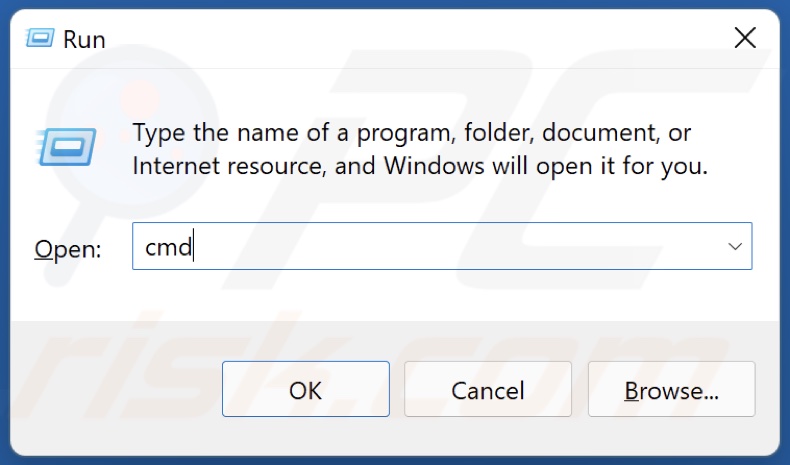
2. In the Run dialog box, type in CMD and hold down Ctrl+Shift+Enter keys to open the elevated Command Prompt.
3. In the Command Prompt window, type in the commands listed below and press the Enter key after typing in each one.
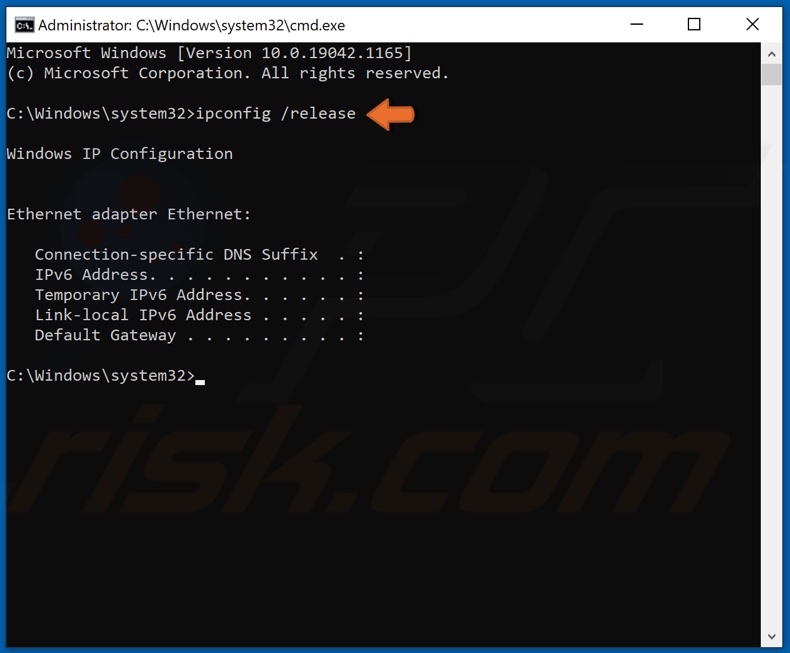
Type in ipconfig /release and press Enter.
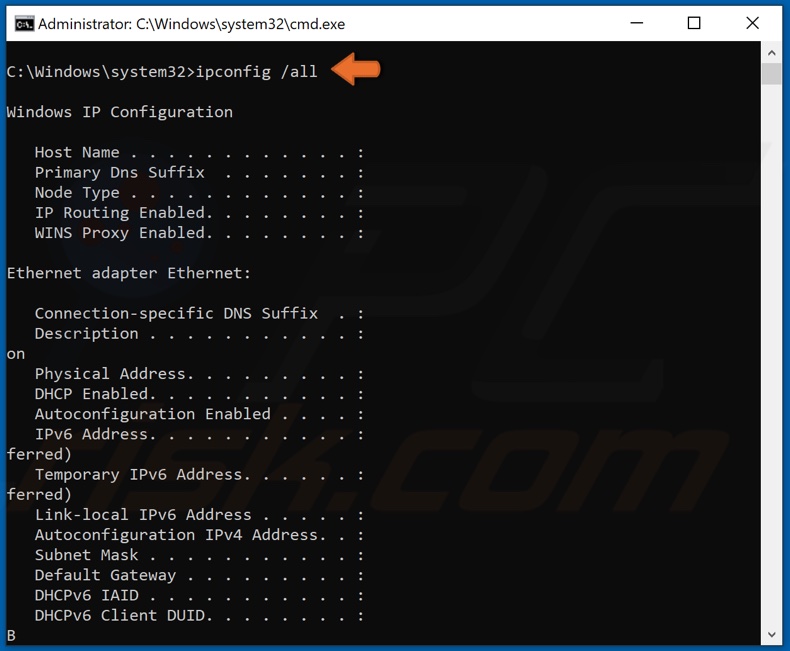
Type in ipconfig /all and press Enter.
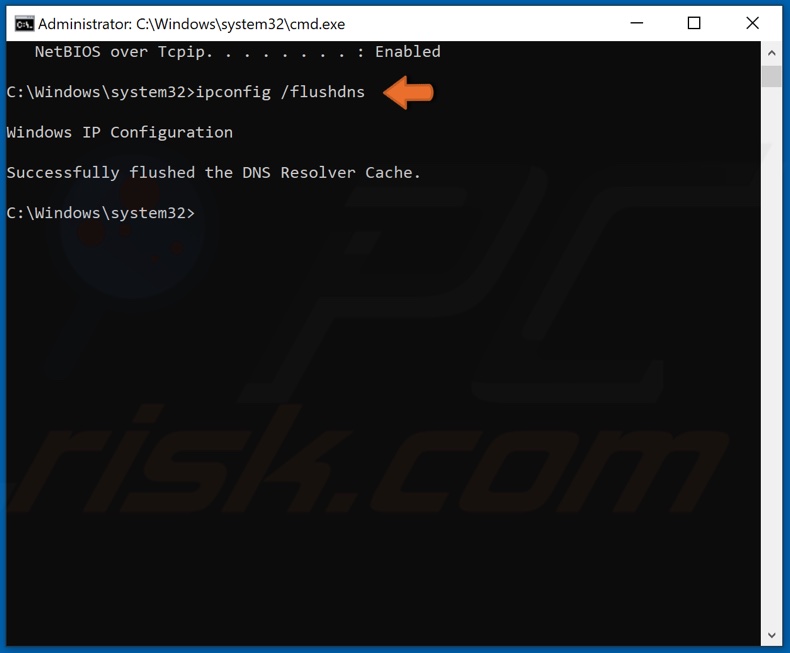
Type in ipconfig /flushdns and press Enter.
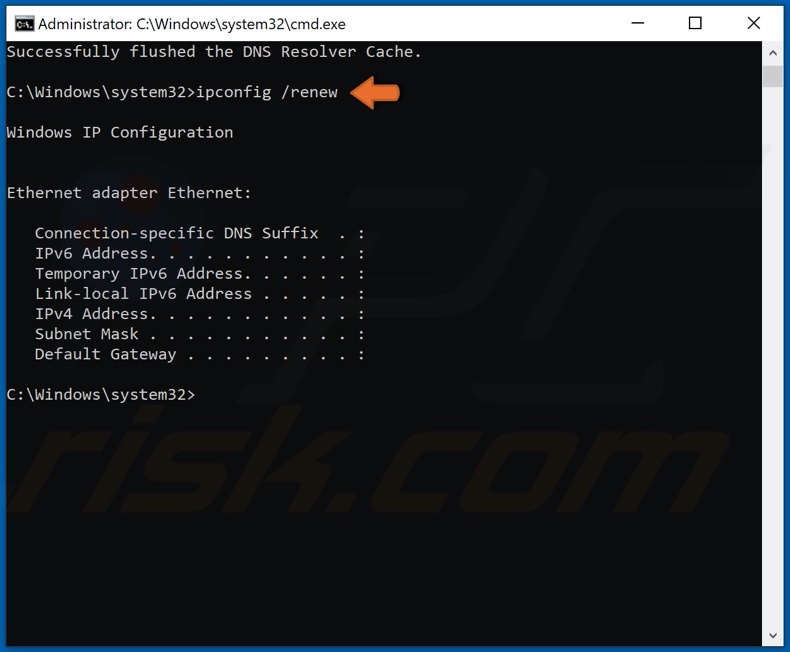
Type in ipconfig /renew and press Enter.
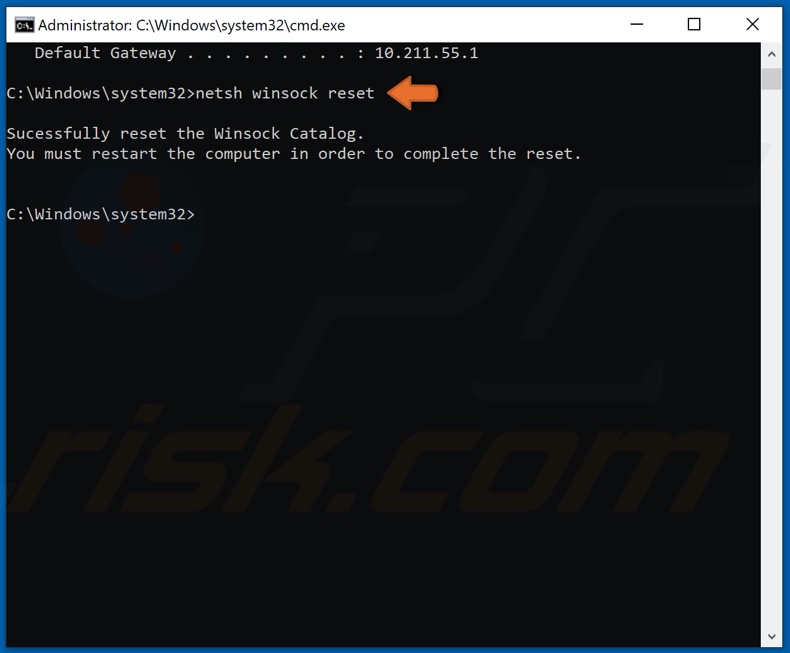
Type in netsh winsock reset and press Enter.
4. Restart your PC.
Solution 4. Change Your DNS Server Address
1. Hold down Windows+R keys to open Run.
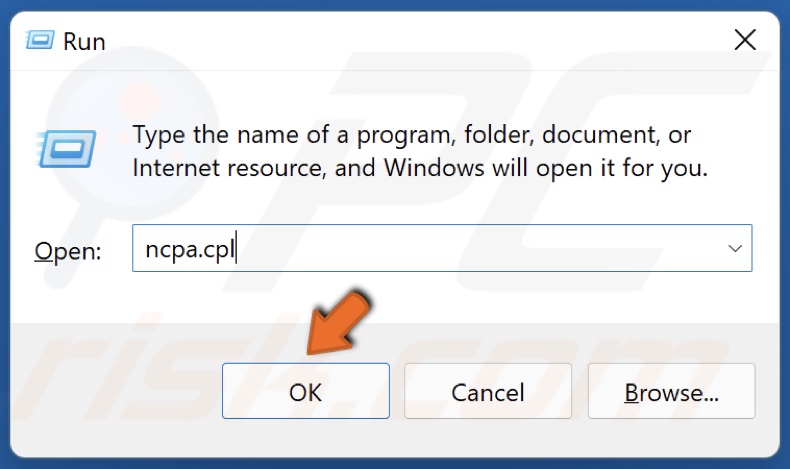
2. In the Run dialog box, type in ncpa.cpl and click OK.
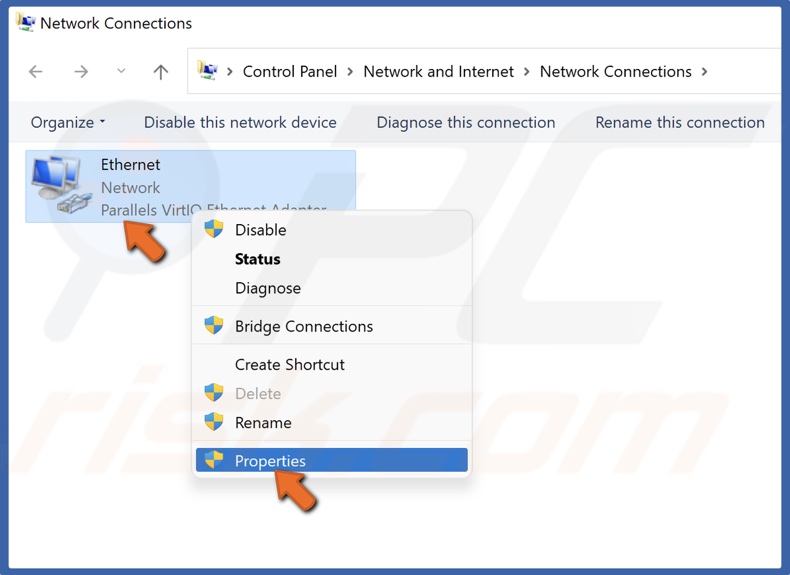
3. Right-click the network adapter and select Properties.
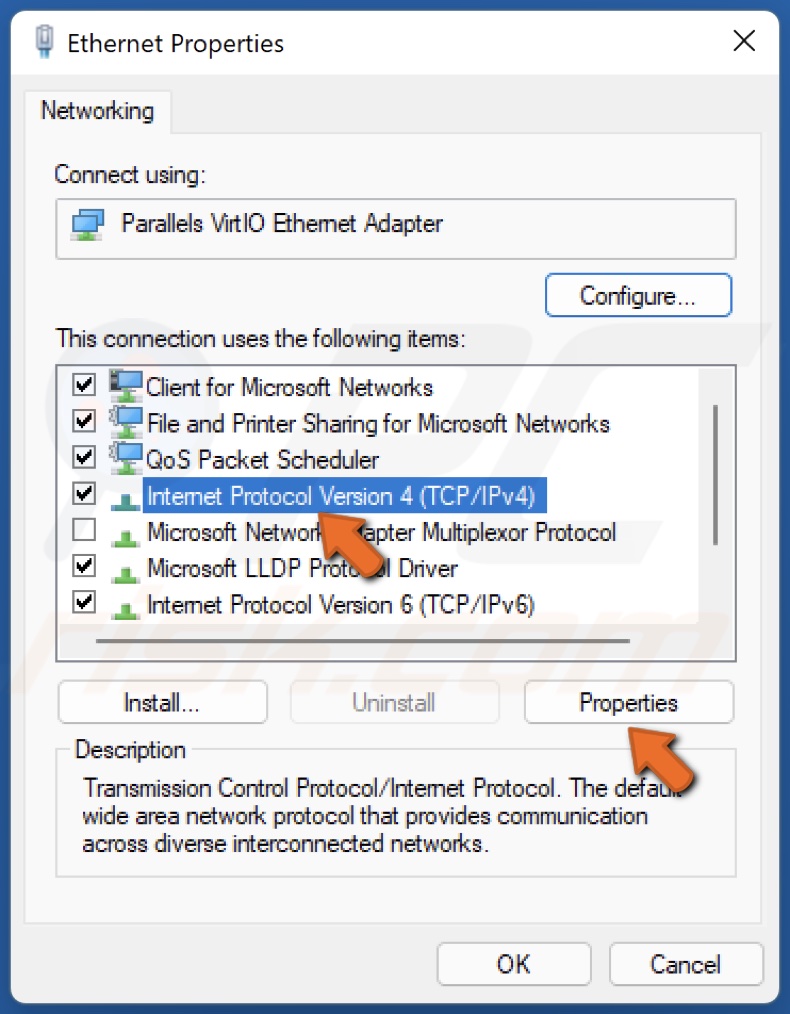
4. Select Internet Protocol Version 4 (TCP/IPv4) and click Properties.
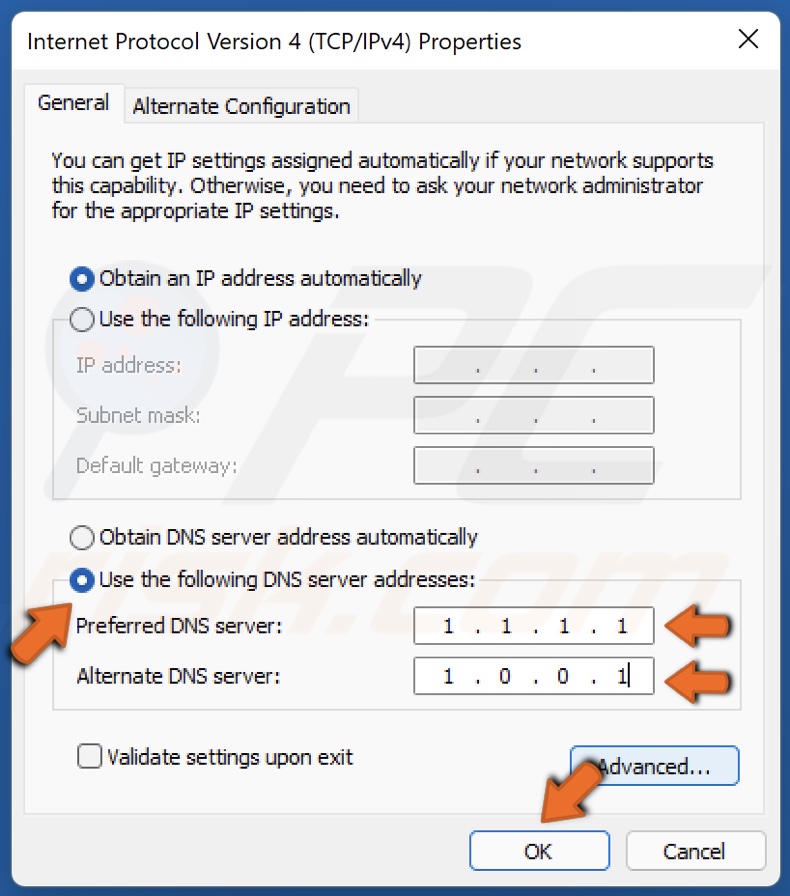
5. Tick the Use the following DNS server addresses option.
6. Enter the following addresses (or your preferred DNS addresses):
In the Preferred DNS server, type in 1.1.1.1
In the Alternate DNS server, type in 1.0.0.1
7. Click OK to save settings.
8. Restart your PC for the changes to take effect.
Share:

Rimvydas Iliavicius
Researcher, author
Rimvydas is a researcher with over four years of experience in the cybersecurity industry. He attended Kaunas University of Technology and graduated with a Master's degree in Translation and Localization of Technical texts. His interests in computers and technology led him to become a versatile author in the IT industry. At PCrisk, he's responsible for writing in-depth how-to articles for Microsoft Windows.

▼ Show Discussion